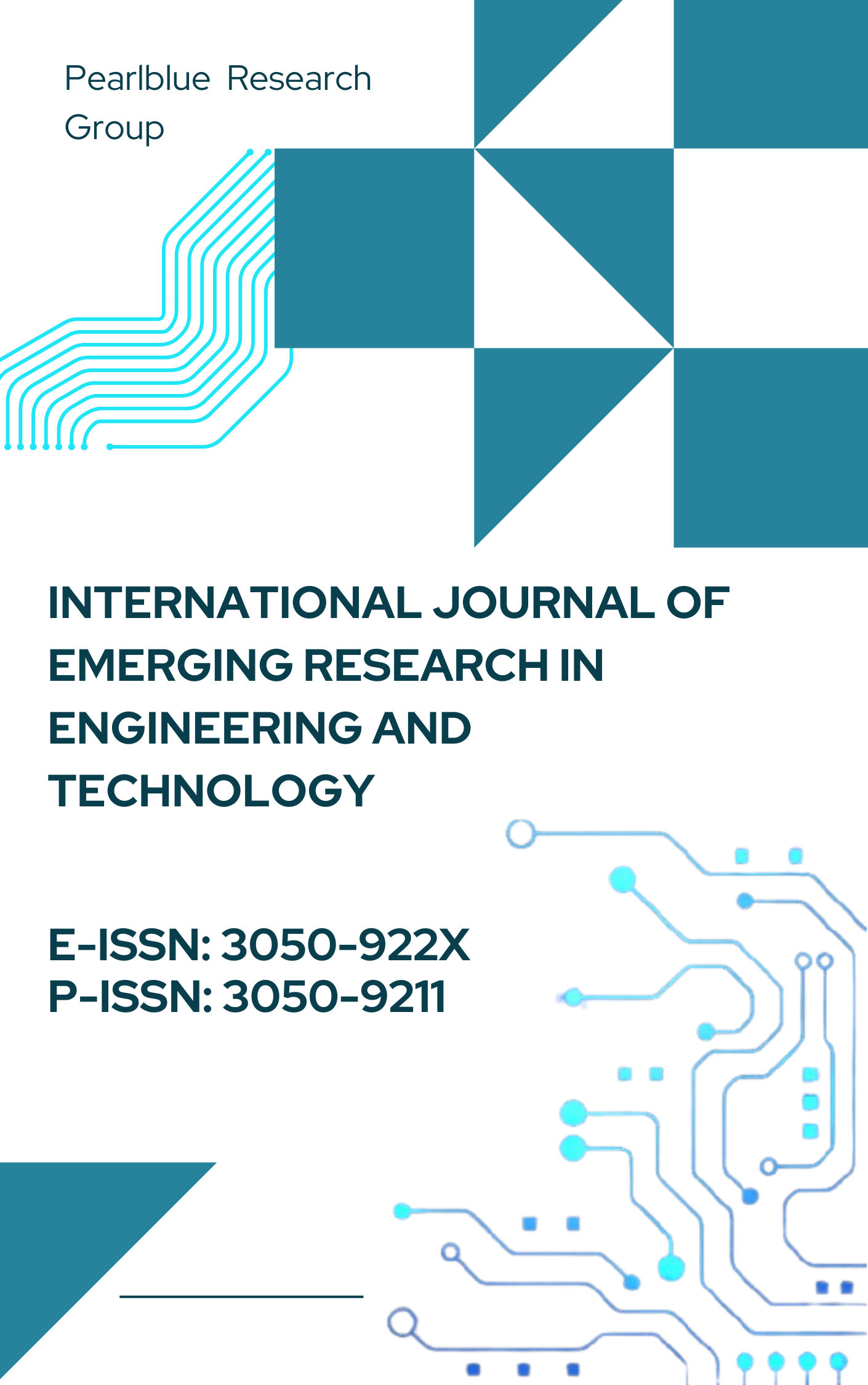Fundamentals of Modern Omni Channel Experience Platform Architecture: Utilization of Cutting-Edge Technologies in Developing Marketing Omnichannel Platforms for the Healthcare and Travel Hospitality Sectors
DOI:
https://doi.org/10.63282/3050-922X.IJERET-V6I3P107Keywords:
Omnichannel Marketing, Customer Data Platform (CDP), Customer Journey Analytics (CJA), Customer Journey Management (CJM), Content Management System (CMS), Personalization, Marketing AutomationAbstract
The fast development of digital technologies has accelerated the process of transformation out of multichannel to omnichannel marketing, especially in the area of highly competitive and consumer-focused sectors, like healthcare and travel hospitality. Traditional multichannel platforms can be effective at reaching a large audience but are limited by fragmented data silos, inconsistent customer engagements, risk of regulatory compliance, and expensive overhead. This article proposes an in-depth architectural layout of a contemporary omnichannel experience platform, based on cutting-edge technologies, aimed at providing a smooth, personalized, and safe customer experience. The proposed design combines the essential elements like Customer Data Platforms (CDP), Customer Journey Management (CJM), Customer Journey Analytics (CJA), Content Management Systems (CMS), personalization engines, and marketing automation tools. Further, AI-based methods such as generative AI, predictive analytics, and intelligent agents have also been introduced to use them to automate the creation of content, audience segmentation and the optimization of campaigns, which reduce time-to-market and increases operational efficiency. The use cases of omnichannel platforms in healthcare and travel hospitality are also presented and discussed, which allows considering how they can enhance patient engagement, regulatory compliance, customer loyalty, and real-time personalization across digital and physical touchpoints. This paper also pinpoints the advantages, limitations and future perspectives of such platform implementation, about the scalability, interoperability, and AI-powered customizations. The modern omnichannel architecture, by unifying fragmented functionality and allowing seamless customer journeys, promotes greater engagement, trust, and increased business performance within the healthcare and travel environments
References
[1] Vinoth, S., & Srivastava, N. (2024). Unveiling the Power of Omni-channel Retail Strategies. In Augmenting Retail Reality, Part B: Blockchain, AR, VR, and AI (pp. 85-112). Emerald Publishing Limited.
[2] Palmatier, R. W., Sivadas, E., Stern, L. W., & El-Ansary, A. I. (2019). Marketing channel strategy: An omni-channel approach. Routledge.
[3] Lazaris, C., & Vrechopoulos, A. (2014, June). From multichannel to “omnichannel” retailing: review of the literature and calls for research. In 2nd International Conference on Contemporary Marketing Issues,(ICCMI) (Vol. 6, pp. 1-6).
[4] Huang, W. J. (2021). Literature review on omnichannel retailing. Expert Journal of Marketing, 9(1).
[5] Hänninen, M., Kwan, S. K., & Mitronen, L. (2021). From the store to omnichannel retail: looking back over three decades of research. The International Review of Retail, Distribution and Consumer Research, 31(1), 1-35.
[6] Mishra, R., Singh, R. K., & Koles, B. (2021). Consumer decision‐making in Omnichannel retailing: Literature review and future research agenda. International Journal of Consumer Studies, 45(2), 147-174.
[7] Ye, Y., Lau, K. H., & Teo, L. K. Y. (2018). Drivers and barriers of omni-channel retailing in China: A case study of the fashion and apparel industry. International Journal of Retail & Distribution Management, 46(7), 657-689.
[8] Taylor, D., Brockhaus, S., Knemeyer, A. M., & Murphy, P. (2019). Omnichannel fulfillment strategies: defining the concept and building an agenda for future inquiry. The International Journal of Logistics Management, 30(3), 863-891.
[9] Hickman, E., Kharouf, H., & Sekhon, H. (2020). An omnichannel approach to retailing: demystifying and identifying the factors influencing an omnichannel experience. The International Review of Retail, Distribution and Consumer Research, 30(3), 266-288.
[10] Asmare, A., & Zewdie, S. (2022). Omnichannel retailing strategy: a systematic review. The International Review of Retail, Distribution and Consumer Research, 32(1), 59-79.
[11] Jocevski, M., Arvidsson, N., Miragliotta, G., Ghezzi, A., & Mangiaracina, R. (2019). Transitions towards omni-channel retailing strategies: a business model perspective. International Journal of Retail & Distribution Management, 47(2), 78-93.
[12] Fensel, A., Toma, I., García, J. M., Stavrakantonakis, I., & Fensel, D. (2014). Enabling customers engagement and collaboration for small and medium-sized enterprises in ubiquitous multi-channel ecosystems. Computers in Industry, 65(5), 891-904.
[13] Preston, R. (2022). Stifling innovation: how global data protection regulation trends inhibit the growth of healthcare research and start-ups. Emory Int'l L. Rev., 37, 135.
[14] Flaumenhaft, Y., & Ben-Assuli, O. (2018). Personal health records, global policy and regulation review. Health policy, 122(8), 815-826.
[15] Robert, W. P., Eugene, S., Louis, W. S., & Adel, I. (2020). Marketing Channel Strategy: An Omni-Channel Approach. Routledge Taylor & Francis Group.
[16] Lin, H., Ouyang, H., Fang, X., Wang, J., Yuan, B., & Yang, W. (2020, September). Architecture design and key technologies study of Omnichannel business platform for electric power marketing. In Journal of Physics: Conference Series (Vol. 1646, No. 1, p. 012087). IOP Publishing.
[17] Gerea, C., Gonzalez-Lopez, F., & Herskovic, V. (2021). Omnichannel customer experience and management: An integrative review and research agenda. Sustainability, 13(5), 2824.
[18] Kaasinen, E., Kymäläinen, T., Niemelä, M., Olsson, T., Kanerva, M., & Ikonen, V. (2012). A user-centric view of intelligent environments: User expectations, user experience and user role inbuilding intelligent environments. Computers, 2(1), 1-33.
[19] Mengoni, M., Frontoni, E., Giraldi, L., Ceccacci, S., Pierdicca, R., & Paolanti, M. (2017, August). Customer experience: A design approach and supporting platform. In Working Conference on Virtual Enterprises (pp. 287-298). Cham: Springer International Publishing.
[20] Samanta, I., & Arkoudis, N. (2024, July). Modeling Omnichannel Retail Marketing Driven by Artificial Intelligence. In International Conference on Applied Economics (pp. 273-294). Cham: Springer Nature Switzerland.
[21] Hassan, W. U., Nawaz, M. T., Syed, T. H., Arfeen, M. I., Naseem, A., & Noor, S. (2015). Investigating Students' Behavioral Intention Towards Adoption of Mobile Learning in Higher Education Institutions of Pakistan. Technical Journal of University of Engineering & Technology Taxila, 20(3).
[22] P. K. Maroju, "Leveraging Machine Learning for Customer Segmentation and Targeted Marketing in BFSI," International Transactions in Artificial Intelligence, vol. 7, no. 7, pp. 1-20, Nov. 2023.
[23] Thirunagalingam, A. (2024). Transforming real-time data processing: the impact of AutoML on dynamic data pipelines. Available at SSRN 5047601.



